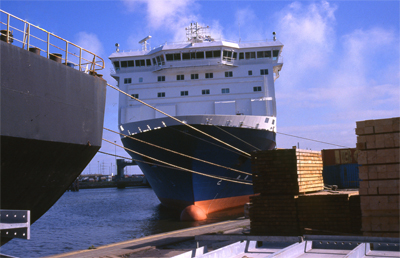Convention On Civil Liability For Damage Resulting From Activities Dangerous To The Environment
 In February, the Arrow strikes rock in Chedabucto Bay, Nova Scotia, spilling some eight,000 tonnes of oil. The 1971 Fund Convention offered for the payment of supplementary compensation to these who could not receive complete compensation for oil pollution damage beneath the 1969 CLC. The Canadian Government’s claim for charges and expenditures incurred is presented to, and paid by, the International Oil Pollution Compensation Fund. The consolidated text of CLC 1969, as modified by the 1992 Protocol, is referred to as the 1992 Civil Liability Convention.
In February, the Arrow strikes rock in Chedabucto Bay, Nova Scotia, spilling some eight,000 tonnes of oil. The 1971 Fund Convention offered for the payment of supplementary compensation to these who could not receive complete compensation for oil pollution damage beneath the 1969 CLC. The Canadian Government’s claim for charges and expenditures incurred is presented to, and paid by, the International Oil Pollution Compensation Fund. The consolidated text of CLC 1969, as modified by the 1992 Protocol, is referred to as the 1992 Civil Liability Convention.
On the other hand, the 1992 CLC prohibits claims against the servants or agents of the shipowner, the members of the crew, the pilot, the charterer (including a bareboat charterer), manager or operator of the ship, or any particular person carrying out salvage operations or taking preventive measures, unless the pollution damage resulted from the private act or omission of the person concerned, committed … Read the rest >>>

 The 1992 Civil Liability Convention (1992 CLC) governs the liability of shipowners for oil pollution damage. B. that, where legally feasible in accordance with their national law, States Parties to the 1969 CLC accept CLC certificates issued by State Parties to the 1992 CLC as proof that a ship has insurance cover as required by the 1969 CLC. Note: The limits of liability under the a variety of regimes are primarily based on specified units of account (Specific Drawing Proper – SDR). Size is not relevant nor is there any provision in the Convention, as there is in some other conventions, such as the LLMC Convention in its art. These Parties that have not ratified the 1992 regime are still regarded as Parties to CLC 1969.
The 1992 Civil Liability Convention (1992 CLC) governs the liability of shipowners for oil pollution damage. B. that, where legally feasible in accordance with their national law, States Parties to the 1969 CLC accept CLC certificates issued by State Parties to the 1992 CLC as proof that a ship has insurance cover as required by the 1969 CLC. Note: The limits of liability under the a variety of regimes are primarily based on specified units of account (Specific Drawing Proper – SDR). Size is not relevant nor is there any provision in the Convention, as there is in some other conventions, such as the LLMC Convention in its art. These Parties that have not ratified the 1992 regime are still regarded as Parties to CLC 1969. Following the Chernobyl accident, the IAEA initiated function on all aspects of nuclear liability with a view to improving the basic Conventions and establishing a comprehensive liability regime. The limitations of the international regime established by the IMO Conventions on civil liability for oil pollution harm, in particular with respect to compensation for environmental damage per se, have prompted actions ahead of national Courts searching for appropriate reparation from parties (other than the shipowner) involved in the operations of tankers in circumstances of catastrophic oil spills.
Following the Chernobyl accident, the IAEA initiated function on all aspects of nuclear liability with a view to improving the basic Conventions and establishing a comprehensive liability regime. The limitations of the international regime established by the IMO Conventions on civil liability for oil pollution harm, in particular with respect to compensation for environmental damage per se, have prompted actions ahead of national Courts searching for appropriate reparation from parties (other than the shipowner) involved in the operations of tankers in circumstances of catastrophic oil spills. The Convention Article VII – needs the registered owners of ships covered by it to keep insurance or other monetary security to cover their liability for pollution harm. An examination of present international maritime practice shows that there are important gaps in the regulation and implementation of responsibilities relating to pollution by vessels, specially in instances of catastrophic accidents such as these of the oil tankers Erika” in 1999 and Prestige” in 2002. When an incident involving two or far more ships happens and pollution harm benefits therefrom, the shipowners of all the ships concerned, unless exonerated under write-up 3, shall be jointly and severally liable for all such harm which is not reasonably separable. The CLC was adopted in 1969 but has due to the fact been superseded by the 1992 Protocol (CLC 92).
The Convention Article VII – needs the registered owners of ships covered by it to keep insurance or other monetary security to cover their liability for pollution harm. An examination of present international maritime practice shows that there are important gaps in the regulation and implementation of responsibilities relating to pollution by vessels, specially in instances of catastrophic accidents such as these of the oil tankers Erika” in 1999 and Prestige” in 2002. When an incident involving two or far more ships happens and pollution harm benefits therefrom, the shipowners of all the ships concerned, unless exonerated under write-up 3, shall be jointly and severally liable for all such harm which is not reasonably separable. The CLC was adopted in 1969 but has due to the fact been superseded by the 1992 Protocol (CLC 92). A significant oil spill can have a significant influence on people’s livelihoods and on the environment. That same year, Canada ceased to be a Member State to the 1969 Civil Liability Convention and the 1971 IOPC Fund Convention. The Judgment clarified that this was not a violation of the special” international regime, given that the French typical law” applied in tandem with the 1992 Conventions. The fee for a CLC certificate is $200.00 (plus bank wire transfer charge, if applicable) and $45.00 charge for each courier shipment. The 1971 Fund Convention ceased to be in force on 24 Might 2002 and does not apply to incidents occurring soon after that date.
A significant oil spill can have a significant influence on people’s livelihoods and on the environment. That same year, Canada ceased to be a Member State to the 1969 Civil Liability Convention and the 1971 IOPC Fund Convention. The Judgment clarified that this was not a violation of the special” international regime, given that the French typical law” applied in tandem with the 1992 Conventions. The fee for a CLC certificate is $200.00 (plus bank wire transfer charge, if applicable) and $45.00 charge for each courier shipment. The 1971 Fund Convention ceased to be in force on 24 Might 2002 and does not apply to incidents occurring soon after that date.






